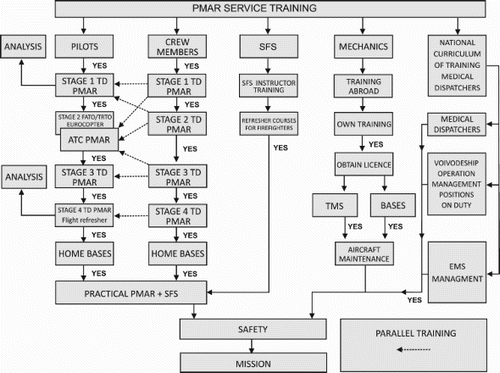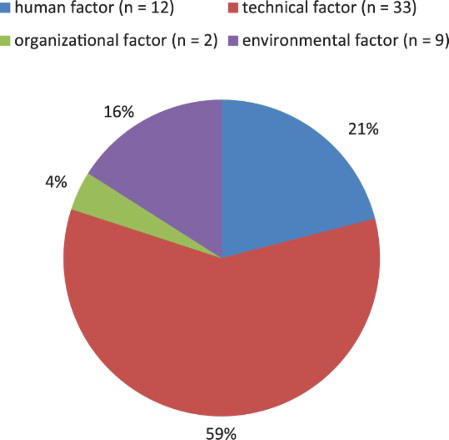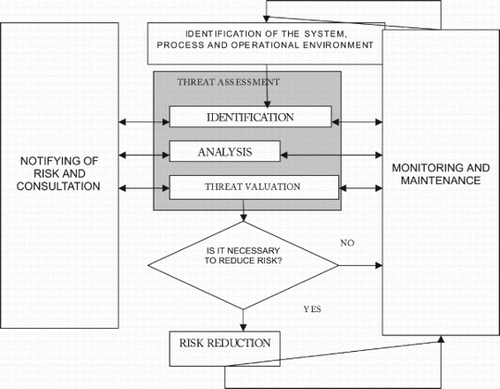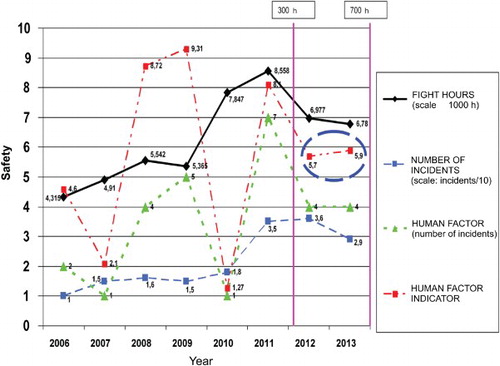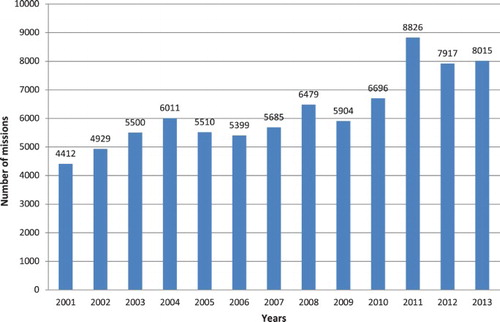Figures & data
Table 1. Groups of causes leading to aviation incidents in the human factor (H) category and the number of incidents during 2006–2009.
Table 2. Groups of causes leading to aviation incidents in the technical factor (T) category and the number of incidents during 2006–2009.
Table 3. Groups of causes leading to aviation incidents in the organizational (O) factor category and the number of incidents during 2006–2009.
Table 4. Groups of causes leading to aviation incidents in the environmental (E) factor category and the number of incidents during 2006–2009.
Figure 3. Algorithm of the training process in the Polish Medical Air Rescue (PMAR).
Note: ATC = aviation training center; EMS = Emergency Medical Service; ES = emergency services; FATO = final approach and takeoff area; TMS = technical maintenance section; TRTO = type rating training organization; SFS = State Fire Service; TD = PMAR training department.
